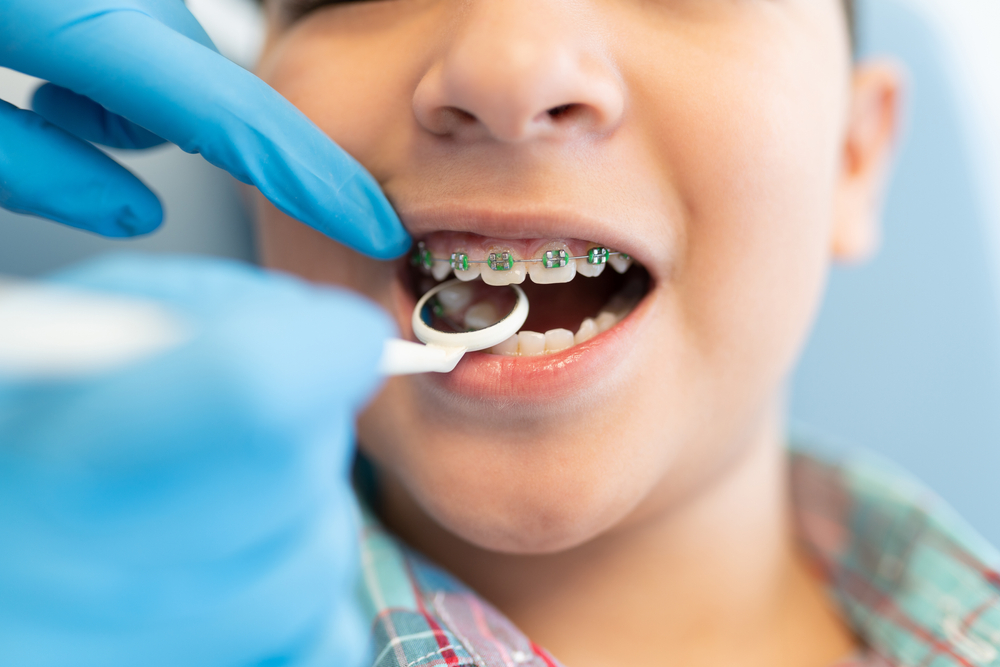
Braces 101: How Long Do You Have to Wear Braces?
Getting braces can be a big decision for families and kids, and understandably so. It’s not only a significant investment of time and money, but it can also impact a person’s appearance and self-esteem.
In this article, we’ll explore the question on many people’s minds: “How long do you have to wear braces?” We’ll cover the factors that affect treatment time, the types of braces available, and what you can expect during your orthodontic journey.
So, let’s dive in and get started!
Factors that Affect Treatment Time
The length of time you’ll need to wear braces can vary widely depending on several factors. Understanding these factors can give you a better idea of what to expect and help you make an informed decision about your orthodontic treatment.
The Severity of Orthodontic Issues
The severity of your orthodontic issue is one of the biggest factors that will affect your treatment time. Minor issues like a small gap between teeth may only require a few months of treatment, while more complex cases like severe crowding or bite problems can take several years. Your orthodontist will evaluate your teeth and create a treatment plan that’s tailored to your specific needs.
Type of Braces Being Used
The type of braces you choose can also affect how long you’ll need to wear them. Traditional metal braces are often the most effective for complex orthodontic issues and may need to be worn for several years.
Crystal clear braces and gold braces are less noticeable then traditional metal braces, however they are equally as effective and do not increase the total tretament length.
Clear aligners like Invisalign can be a great option for mild to moderate orthodontic issues and may only need to be worn for a year or less.
Adherence to Orthodontist’s Instructions
How well you follow your orthodontist’s instructions can also affect your treatment time. You’ll need to wear your braces for the recommended amount of time each day and follow any additional instructions, such as wearing rubber bands. If you don’t follow these instructions, it can increase the time you need to have braces.
By considering these factors, you’ll have a better idea of how long you or your child may need to wear braces. In the next section, we’ll explore the different types of braces available and how they work.
Types of Braces
There are several types of braces available, each with its own advantages and disadvantages.
Here’s a brief overview of the most common types of braces:
Traditional Metal Braces
Traditional metal braces are the most common type of braces and are often the most effective for complex orthodontic issues. They’re made of metal brackets and wires and are attached to the teeth using a dental bonding agent. While they’re not as discreet as some other types of braces, they’re often the most cost-effective option.
Ceramic Braces
Ceramic braces are similar to metal braces but are made of crystal clear materials, making them less noticeable. This can be a great option for patients who want the effectiveness of metal braces but don’t want the appearance of metal in their mouth. However, ceramic braces are typically more expensive than metal braces and can be more prone to breaking.
Lingual Braces
Lingual braces are attached to the back of the teeth, making them virtually invisible from the front. This can be a great option for patients who want the effectiveness of metal braces but don’t want anything visible on the front of their teeth. However, lingual braces can be more difficult to clean, are not as comfortable and can increase treatment length.
Clear Aligners
Clear aligners like Invisalign are removable plastic trays that gradually move the teeth into the correct position. They’re virtually invisible and can be removed for eating and cleaning. Clear aligners can be a great option for mild to moderate orthodontic issues, but they may not be as effective for more complex cases.
Your orthodontist will evaluate your orthodontic issue and recommend the type of braces that will be most effective for your individual needs. The type of braces you choose can also affect how long you’ll need to wear them, which we’ll explore in the next section.
How Long to Wear Braces
So, how long do you have to wear braces? As we’ve discussed, the length of treatment time can vary widely depending on several factors. Here’s what you can expect based on the type of braces you choose:
Traditional Metal Braces
Traditional metal braces are often the most effective for complex orthodontic issues and may need to be worn for several years. The average treatment time for metal braces is around 2 years, but it can be shorter or longer depending on the severity of your orthodontic issue.
Ceramic Braces
Ceramic braces work similarly to metal braces but may have a slightly longer treatment time, with an average treatment time of 2 years.
Lingual Braces
Lingual braces can also take longer to achieve the desired result, with an average treatment time of 2-3 years.
Clear Aligners
Clear aligners like Invisalign may have a shorter treatment time than traditional braces, depending on the severity of your orthodontic issue. The average treatment time for clear aligners is around 12-18 months.
It’s important to note that these are just averages, and your treatment time may be longer or shorter depending on your individual needs. Additionally, how well you follow your orthodontist’s instructions can also affect your treatment time.
Curious to find out more about this topic? Check out our last blog post on, “When to tart Brushing Your Baby’s Teeth: A Guide for Parents.”
